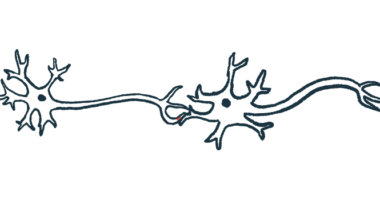Imaging shows low MC1 protein levels in FA patients’ hearts
Small study shows protein's potential as FA biomarker

Levels of mitochondrial complex 1 (MC1) — a group of proteins essential to the function of mitochondria, cells’ powerhouses — are lower than normal in the hearts of people with Friedreich’s ataxia (FA), a small study showed.
The findings indicate that imaging of MC1 could be a useful biomarker in FA, though researchers cautioned that further studies are needed to validate this.
The study, “Evaluation of Mitochondrial Complex 1 Density with [18F]BCPP-EF in a Murine Model and Individuals with Friedreich Ataxia,” was published in The Journal of Nuclear Medicine.
FA is caused by mutations in the FXN gene, resulting in low levels of a protein called frataxin. Low frataxin levels lead to dysfunction of mitochondria, which are cellular structures essential for energy generation.
The MC1 protein complex is vital to the function of mitochondria. Scientists recently developed a new method to image this protein complex in people, using PET scans with a tracer called [18F]BCPP-EF. The [18F]BCPP-EF tracer binds to MC1 in the body’s cells, causing areas with more of this protein complex to light up on PET scans. Imaging of MC1 with the [18F]BCPP-EF tracer has never been done in people with FA, and [18F]BCPP-EF-based imaging has never been used to assess the heart.
FA mice also show low MC1 levels
In the Pfizer-funded study, scientists used PET imaging with the [18F]BCPP-EF tracer to evaluate MC1 levels in 12 people with FA and 18 volunteers without known diseases. Participants with FA were, on average, 34 years old (range, 18–61), could walk independently, and generally had mild disease.
Results showed that the FA patients had significantly lower MC1 levels in their hearts. Similar findings were seen comparing a mouse model of Friedreich’s ataxia with healthy mice.
MC1 levels in a brain region called the precentral gyrus were also lower in FA patients than in healthy volunteers. However, this difference was not statistically significant, meaning there’s a non-negligible likelihood the difference could be random chance.
Most FA cases are caused by a specific type of mutation called a trinucleotide repeat expansion, where a short stretch of the genetic code is repeated an excessive number of times. Generally, more repeats are associated with lower frataxin levels and more severe FA. The imaging data indicated that FA patients with a longer repeat also had lower MC1 protein levels in their hearts and lower frataxin levels in their blood. Statistical analyses showed that MC1 levels in the heart were generally higher among older FA patients.
The researchers cautioned that because of the study’s small size, further studies are needed to verify the findings. Still, they said the data broadly support the idea that PET imaging, in looking at MC1 activity, could be a useful biomarker for monitoring FA.
“Our findings suggest [18F]BCPP-EF–based PET imaging can be used repeatedly in patients with FA and could be used to monitor disease status and disease progression or as a possible endpoint in clinical trials on further validation and optimization,” the scientists concluded.







